 This year the foundation border under the front living room windows flagged around mid-summer, taking on a peaked and slightly famished appearance. Every season one or another spot in a perennial bed or hedgerow grouping or flowering border will do this, suddenly becoming anemic or revealing under-populated areas, plantings that are growing more feeble instead of more fecund, and calling out for re-invigoration. Once the columbine, bleeding hearts, delphiniums and bee balm began winding down in late July, this south-facing border sported more vacancy than arresting occupants.
This year the foundation border under the front living room windows flagged around mid-summer, taking on a peaked and slightly famished appearance. Every season one or another spot in a perennial bed or hedgerow grouping or flowering border will do this, suddenly becoming anemic or revealing under-populated areas, plantings that are growing more feeble instead of more fecund, and calling out for re-invigoration. Once the columbine, bleeding hearts, delphiniums and bee balm began winding down in late July, this south-facing border sported more vacancy than arresting occupants.Much of the blame for the under-employment of this very visible sunny patch falls to the holly bush. Meant to anchor and fill up the back of the border with high gloss, leafy, spreading branches and clusters of red berries, the blue-girl and blue-boy holly couple had not grown above knee high in six years of residency. More distressingly, despite the arranged match-up of a male and female of the species for pollination purposes, the missus had never grown even a single berry.
The location is a hot one, getting sun nearly all day long, although the river birch and Cleveland pear centered in the front yard have matured enough in the last couple years to alleviate the sunbath somewhat with shade. Still, the strong summer light, heat and dryness seemed to be undermining the holly's prospects for vigor and expansiveness, and forcing the conclusion that it was simply uncongenially sited. So more accurately, the gardener who placed the holly there because she wanted green and red bushiness splayed picturesquely against the front house wall, is in fact really the culprit who must bear the blame.
Unwilling to give up on the mistreated holly, and the capacity I am sure still lurks suppressed within its woody loins for putting forth a bird-feast of red berries, a remedial relocation was undertaken forthwith. A new home along the east side of the house, shady and cool in the afternoons, was chosen. A day before the move, a trench was dug with a shovel down two feet or so, in a circle around the shrub and a couple feet out from its trunk, to sever the roots and telegraph to the holly that changes were in the offing, thus giving it a day to get used to the idea and to ameliorate the physical trauma attendant upon being dug up out of the ground. The following day, a large hole was excavated in the new domicile, thoroughly soaked with a couple gallons of water, and lined with bedding bottom and sides of composted cow manure. The holly was then gently unearthed and moved, with as much of its root ball intact as possible. Well watered in and kept watered bi-weekly since then, to all outward appearances it seems to have taken quite blissfully to the transplantation, even after just two months shining green and glowing and, methinks, more flush with health.
The gaping wound in the front border was sutured up, the same day, with a new clethra summersweet ruby spice shrub. This newcomer is an upright, fan-shaped bush, that flowers from mid-July through summer's end with bottle brush candles of flowers in soft pink. The flowers give forth a rich, incredibly sweet fragrance, which one hopes will waft through the front windows and infuse the rooms of the house with one of summer's headiest perfumes. Flowering occurs on new wood with a clethra, so future pruning for shaping can be done at will, spring, summer or fall. Butterflies and hummingbirds find its nectar irresistible, and in a conducive setting, it can grow six to eight feet tall.
A summersweet shrub is an augmentation to the garden I have specifically coveted for quite some time, since being introduced to its munificent flowering talent and almost decadent, intense scent in other gardens and along country lanes and creeksides. The garden can always use more summer into autumn bloomers, as well. This shrub makes an excellent foundation plant, according to the information sheet printed out from the Ohio State University extension service website, after the clethra was installed in its new dwelling and I decided to do a little investigation into the finer points of its personality. For preference, the information sheet went on, clethras incline to moist and shady soils. Uh oh.
And hence begins another campaign by the gardener to encourage and raise up an adoptee in a less than optimal, poorly thought-through situation. Maybe the annually widening, deepening shade of the birch and pear trees will offer adequate, compensatory canopies to offset the gardener's shortcomings in advance planning and research. Maybe – no, certainly – the gardener has dimwittedly consigned herself to hours of auxiliary watering down the next few years of hot summer months to come. Maybe the shade and extra watering, taken together, will be just the ticket to stimulate the clethra to live up to its name, and be a big, bushy helping of summer sweetness in the front border. If not, then yet another re-think and revision to the border will, one future day, need to be done.
The garden is never entirely what the gardener envisions and wishes it to be. Plants don't always like their placement. Pest deterrents are never one-hundred percent fail-proof. Weather isn't always kind, seeds are not always fruitful. With even the best will, intentions and assiduous labor, not all garden components will prove their mettle and grow up well and successful. Reinvention, rejuvenation, relocation and other forms of change, flexibility and adaptation are unavoidable concomitants of the pursuit of a bountiful garden. The gardener's lot in life is to be a constant copy editor of her creations. Especially when, as with yours truly, garden design is directed more by desire and impulsiveness than careful, cross the t's and dot the i's forethought.
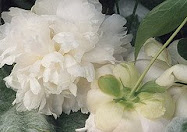


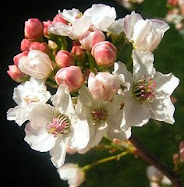
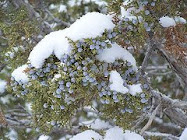

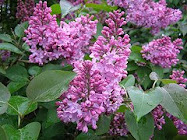
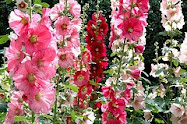
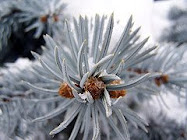
No comments:
Post a Comment